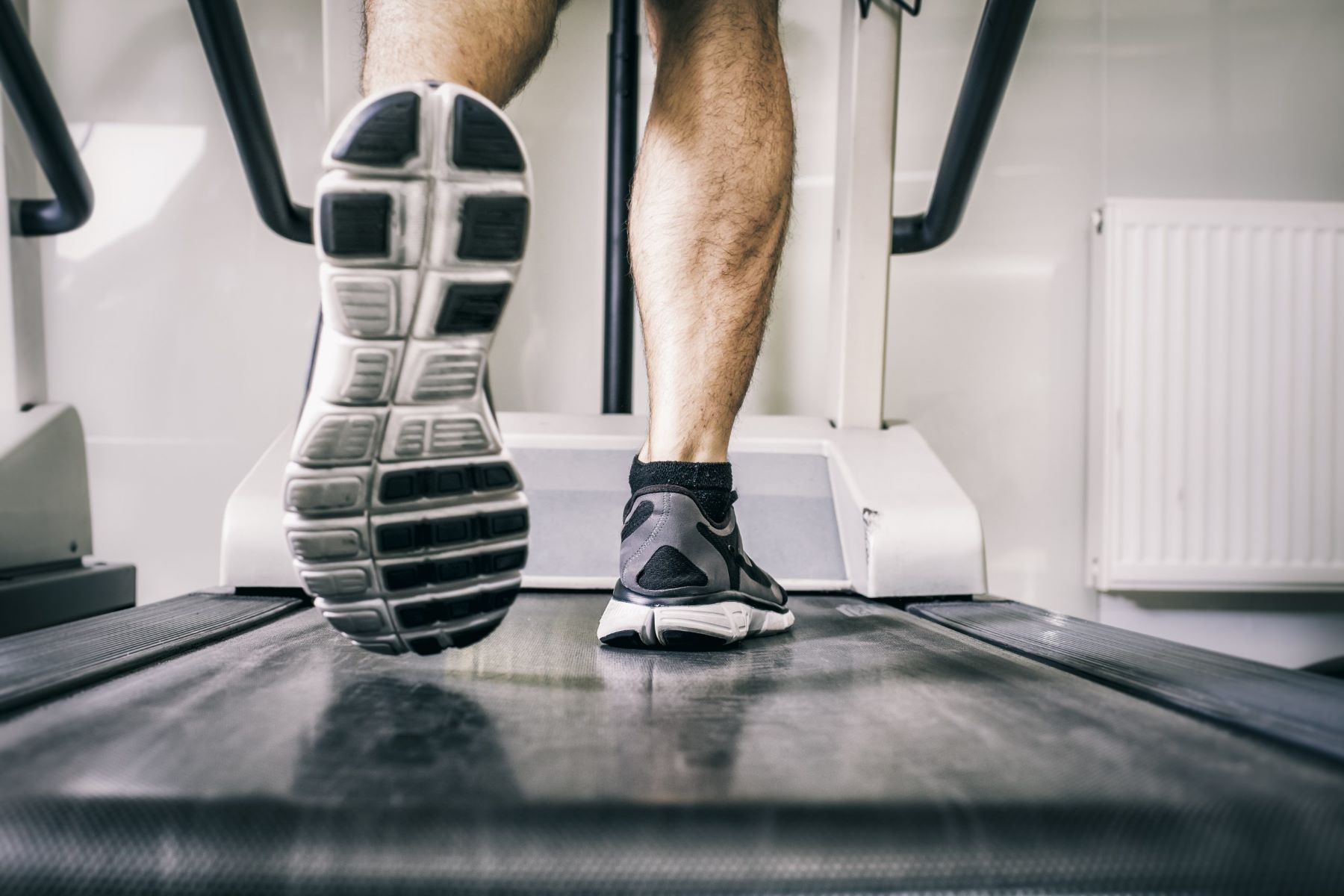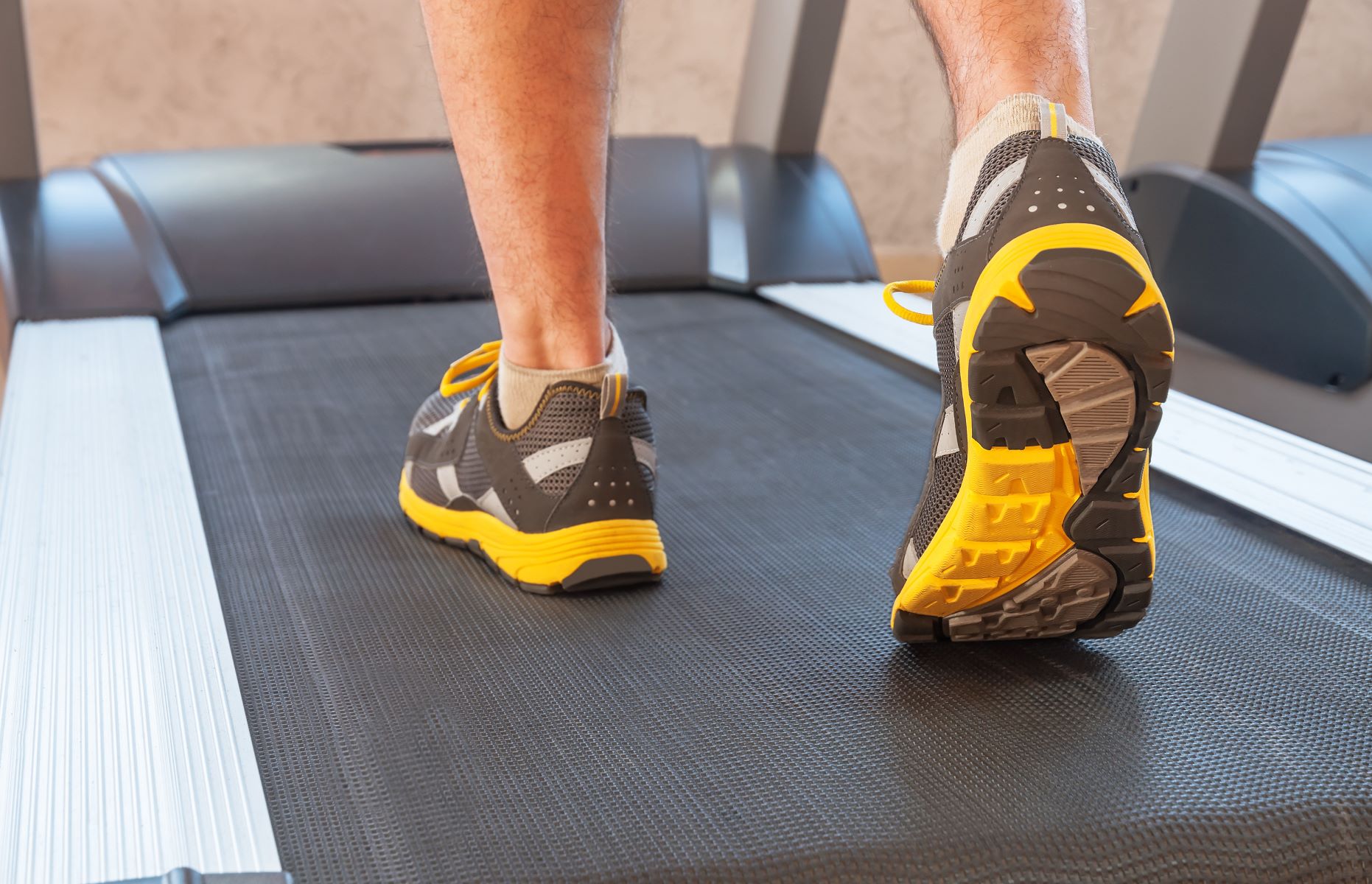

Featured
Why Does My Treadmill Shock Me
Modified: August 19, 2023
Discover why your treadmill is shocking you with our featured article. Get the answers to prevent electrical shocks during your workouts.
Introduction
Have you ever experienced a shocking surprise while using your treadmill? While treadmills are designed to provide a safe and effective exercise experience, it’s not uncommon for users to feel an electrical shock when using them. This can range from a mild tingling sensation to a more jolting shock.
Understanding why you may be experiencing these electric shocks is crucial to prevent any potential harm and alleviate your concerns. In this article, we will delve into the possible causes of electric shocks from treadmills and provide insights on how to address and prevent this issue.
It’s important to note that electric shocks from treadmills are not something to be taken lightly. Even a mild shock can be uncomfortable and disconcerting, and in some cases, it can be a sign of underlying electrical issues that require immediate attention. By understanding the causes of these shocks, you can take the necessary steps to prevent them and ensure a safe workout environment.
So, let’s dive in and explore the possible reasons why your treadmill may be giving you a shocking experience.
Understanding Electric Shocks from Treadmills
Electric shocks from treadmills can be a perplexing and concerning issue for users. To grasp this phenomenon, it’s crucial to understand how electrical currents can be conducted through the body during treadmill use.
Treadmills are powered by electricity, and they typically have various electrical components such as motors, circuit boards, and wires. When you step on the treadmill, your body becomes an electrical path due to its conductivity. If there are any faults or malfunctions in the electrical system of the treadmill, it can result in electric shocks being transmitted to the user.
The shocks may vary in intensity and sensation. Some users may experience a slight tingling or static-like sensation, while others may feel a more pronounced and uncomfortable shock. The severity of the shock can depend on various factors, including the magnitude of the electrical problem and individual sensitivity.
It’s important to note that not all instances of feeling a shock on a treadmill are necessarily dangerous. In some cases, it could be a harmless static discharge caused by friction between your body and the treadmill surface. However, it’s essential to be cautious and take steps to identify and resolve any potential electrical issues.
In the following sections, we will explore the possible causes of electric shocks from treadmills and provide insights on how to address and prevent this issue effectively. By understanding these causes, you’ll have a better understanding of how to ensure a safer and more enjoyable workout experience.
Possible Causes of Electric Shocks
There are several potential causes that can lead to electric shocks when using a treadmill. Let’s explore some of the most common factors that may contribute to this issue:
- Grounding Issues: One of the primary causes of electric shocks is inadequate grounding. Grounding is a safety measure that ensures the electrical current is properly directed into the ground, preventing it from flowing through the user’s body. If the treadmill is not properly grounded or if there is a fault in the grounding system, it can increase the risk of electric shocks.
- Faulty Electrical Wiring: Another common cause is faulty electrical wiring within the treadmill. Over time, the electrical connections may become loose or damaged, resulting in improper flow of electricity. This can lead to electrical leakage and potential electric shocks when using the treadmill.
- Inadequate Insulation: Insulation plays a crucial role in preventing electrical contact. If the insulation on the electrical components of the treadmill deteriorates or gets damaged, it can expose the user to electrical currents. This can occur due to wear and tear, pests, or improper maintenance.
- Moisture and Humidity: Moisture and humidity can also contribute to electric shocks on treadmills. When moisture or excessive humidity comes into contact with the electrical components, it can create a conductive path for electricity. This can increase the risk of shocks, especially if the user’s body is also in contact with the treadmill.
- Wearing Improper Footwear: The type of footwear you wear while using a treadmill can also affect the likelihood of experiencing electric shocks. Certain footwear, such as shoes with metal components or conductive soles, can increase the conductivity and make you more susceptible to shocks. It is essential to wear proper athletic shoes that provide insulation and minimize the risk of electrical contact.
These are just a few of the possible causes of electric shocks when using a treadmill. It’s important to note that some issues may require professional inspection and repair. In the next sections, we will discuss ways to address and prevent electric shocks effectively, ensuring a safer workout environment.
Grounding Issues in Treadmills
Proper grounding is a crucial safety feature in any electrical device, including treadmills. When it comes to treadmills, grounding helps redirect any electrical currents away from the user, reducing the risk of electric shocks. However, issues with grounding can be a significant factor contributing to electric shocks during treadmill use.
There are a few common grounding issues that can occur in treadmills:
- Improper Grounding: One of the primary causes of electric shocks is the lack of proper grounding. If the treadmill is not adequately grounded, the electrical current may not flow as intended, increasing the risk of shocks. This can happen due to faulty wiring or improper installation of the grounding system during manufacturing.
- Loose Electrical Connections: Another grounding issue is loose electrical connections within the treadmill. Over time, vibrations and regular use can cause connections to become loose, disrupting the flow of electricity. This can not only compromise the grounding but also increase the risk of electric shocks.
- Worn-out Grounding Wire: The grounding wire in a treadmill can wear out or become damaged over time, affecting its effectiveness. If the grounding wire is compromised, it cannot effectively redirect the electrical current, thereby increasing the risk of electric shocks.
- Insufficient Grounding Points: Treadmills should have multiple grounding points to ensure effective grounding and electrical safety. If a treadmill has an insufficient number of grounding points, the current may not disperse evenly, increasing the likelihood of shocks in certain areas.
If you suspect that grounding issues are causing electric shocks on your treadmill, it is important to address the problem promptly. Contacting a professional electrician or the manufacturer’s customer service department can provide guidance on troubleshooting or repairing any grounding issues. Avoid attempting to fix the grounding issue yourself as it may require specialized knowledge and skill to ensure proper electrical safety.
By ensuring that the grounding in your treadmill is intact and functioning correctly, you can significantly reduce the risk of electric shocks and create a safer environment for your workouts.
Faulty Electrical Wiring
Faulty electrical wiring is another common cause of electric shocks when using a treadmill. Wiring issues can occur due to various reasons and can lead to the improper flow of electricity, increasing the risk of shocks. It’s essential to understand the potential problems and take appropriate steps to address any faulty electrical wiring in your treadmill.
Here are a few common wiring issues that can contribute to electric shocks:
- Loose Connections: Over time, the electrical connections within the treadmill may become loose. Continuous vibrations from the motor and regular use can cause wires to become disconnected or poorly connected, resulting in electrical leakage and potential shocks. Regular inspection and maintenance can help identify and rectify any loose connections.
- Exposed Wires: Exposed wires pose a significant risk of electric shocks. Wear and tear, rodents, or improper handling can lead to insulation damage, exposing the wires. When these exposed wires come into contact with the user, it can result in electric shocks. Inspecting the wiring and promptly repairing any exposed or damaged wires is crucial for user safety.
- Incorrect Wiring: Incorrect wiring during manufacturing or installation can also contribute to electric shocks. If the wiring is not done according to the specific electrical standards or if the wires are crossed or improperly connected, it can cause electrical imbalances and increase the risk of shocks. Ensuring proper wiring during initial setup and seeking professional assistance when needed is essential to minimize this risk.
- Wear and Tear: Like any other electrical component, treadmill wiring can deteriorate over time due to wear and tear. Aging wires may become brittle, leading to cracks in the insulation or fraying of the wires themselves. Regular maintenance and inspection can help identify any signs of wear and tear and address them before they pose a safety hazard.
If you suspect faulty electrical wiring as the cause of electric shocks, it is important to seek professional help. An electrician or treadmill technician can diagnose any wiring issues and provide the necessary repairs or replacements. It is essential to refrain from attempting to fix wiring issues yourself unless you have the proper knowledge and expertise.
Regular inspection, maintenance, and prompt repair of any faulty electrical wiring in your treadmill are crucial to ensure a safe and shock-free workout experience.
Inadequate Insulation
Inadequate insulation is another factor that can contribute to electric shocks while using a treadmill. Insulation is essential as it prevents electrical currents from coming into direct contact with the user. When insulation becomes inadequate or compromised, it can lead to the flow of electricity and potential shocks. Understanding the importance of proper insulation and addressing any insulation-related issues is crucial for user safety.
Here are a few common causes of inadequate insulation in treadmills:
- Deterioration: Over time, the insulation on the treadmill’s electrical components may deteriorate. Exposure to heat, moisture, friction, and other environmental factors can cause the insulation material to break down, crack, or become brittle. This deterioration can expose the underlying electrical components and increase the risk of electric shocks.
- Damage: In some cases, insulation may become damaged due to accidents, pests, or improper handling. For example, rodents or insects may chew through the insulation, leaving the internal electrical components exposed. It is important to promptly identify and repair any damage to the insulation to prevent the risk of shocks.
- Manufacturer Defects: Inadequate insulation can sometimes be the result of manufacturing defects. This can include substandard insulation materials, improper installation of insulating layers, or lack of quality control during the manufacturing process. In such cases, it may be necessary to reach out to the manufacturer or seek professional assistance to rectify the insulation issues.
- Lack of Maintenance: Regular maintenance is essential to identify and address any insulation-related issues. Without proper maintenance, insulation problems may go unnoticed, increasing the risk of shocks. Regular cleaning and inspection of the treadmill, including checking for any signs of insulation damage or wear, can help maintain the integrity of the insulation.
If you suspect inadequate insulation in your treadmill, it is important to take action. Promptly addressing insulation issues can help prevent potential electric shocks and ensure a safer workout environment. Seeking professional assistance from a technician or contacting the manufacturer’s customer service can help diagnose and address any insulation-related concerns.
Remember, maintaining proper insulation is vital for electrical safety while using a treadmill. Regular inspection, prompt repairs, and periodic maintenance are key to preventing inadequate insulation-related electric shocks.
Moisture and Humidity
Moisture and humidity can play a significant role in the occurrence of electric shocks while using a treadmill. When moisture or excessive humidity comes into contact with the electrical components of the treadmill, it can create a conductive path for electricity. This can increase the risk of electric shocks, especially when the user’s body is also in contact with the treadmill.
Here are some potential factors related to moisture and humidity that can contribute to electric shocks on treadmills:
- Sweat: When working out on a treadmill, it’s common for users to sweat. Sweat can contain electrolytes and minerals that can enhance the conductive properties of moisture. If sweat comes into contact with exposed electrical components or wiring, it can increase the risk of electric shocks.
- Spills: Accidental spills or liquid leaks near the treadmill can create a moist environment. If these liquids seep into the electrical components or onto the treadmill’s surface, they can compromise the insulation and increase the risk of electric shocks. It’s crucial to promptly clean up any spills and ensure the treadmill is dry before using it.
- High Humidity Environments: In regions with high humidity, the moisture content in the air can be significantly higher. This increased humidity can contribute to the general dampness of the environment and increases the probability of moisture coming into contact with the treadmill’s electrical components. This can further elevate the risk of electric shocks.
- Poor Ventilation: Insufficient air circulation and poor ventilation can create a moist environment around the treadmill. This lack of ventilation can allow moisture to accumulate and come into contact with the electrical components. Proper ventilation and airflow can help mitigate moisture-related risks and reduce the chances of electric shocks.
To minimize the risk of electric shocks related to moisture and humidity, consider the following measures:
- Wipe down and dry the treadmill after each use to remove any accumulated sweat or moisture.
- Ensure the surrounding area is dry and free from any spilled liquids.
- Place the treadmill in a well-ventilated area to allow for proper airflow and reduce moisture accumulation.
- Avoid using the treadmill in excessively humid environments, if possible.
- Consider using a dehumidifier in the room where the treadmill is located to maintain a drier environment.
By taking these precautions and being mindful of moisture and humidity levels, you can reduce the risk of electric shocks caused by these factors and create a safer workout environment.
Wearing Improper Footwear
The type of footwear you wear while using a treadmill can also be a contributing factor to electric shocks. Certain types of footwear can increase the conductivity between your body and the treadmill’s surface, making you more susceptible to electric shocks. It is important to wear proper athletic shoes that provide insulation and minimize the risk of electrical contact.
Here are some key factors to consider regarding footwear-related electric shocks:
- Conductive Materials: Some shoes are made with conductive materials such as metal components or conductive soles. These materials can significantly increase the conductivity between your body and the treadmill, making you more prone to electric shocks. It is advisable to avoid wearing shoes with these characteristics when using a treadmill.
- Moisture Absorption: Shoes that easily absorb moisture can pose a higher risk of electric shocks. When moisture from sweat or spills is absorbed by the shoes, it can create a conductive path between your body and the treadmill, increasing the likelihood of shocks. Choosing shoes with materials that are resistant to moisture absorption can help reduce this risk.
- Insulation: Proper insulation is crucial in preventing electric shocks. Shoes that have sufficient insulation properties can help protect you from any potential electrical contact with the treadmill. Look for shoes with non-conductive materials, such as rubber or non-metallic components, to provide adequate insulation during your workouts.
- Proper Fit: Wearing shoes that fit properly ensures that your feet are adequately supported, reducing the risk of accidental contact with the treadmill’s electrical components. Shoes that are too loose or too tight can increase the chances of your feet slipping or touching areas they shouldn’t, potentially leading to electric shocks.
To minimize the risk of electric shocks related to improper footwear, follow these guidelines:
- Choose athletic shoes specifically designed for workouts and running, with non-conductive materials and proper insulation.
- Avoid wearing shoes with metal components or conductive soles while using a treadmill.
- Select shoes with moisture-wicking properties to reduce moisture absorption and enhance insulation.
- Ensure your shoes fit properly and provide adequate support and stability during your workout.
By wearing appropriate footwear that provides insulation and minimizes electrical contact, you can significantly reduce the risk of electric shocks and enjoy a safer workout experience on your treadmill.
Maintaining and Preventing Electric Shocks
Maintaining your treadmill and taking proactive measures are essential to prevent electric shocks and ensure a safe workout environment. By following these maintenance and prevention tips, you can minimize the risk of experiencing electric shocks:
- Regular Cleaning: Clean your treadmill regularly to remove any dust, dirt, or sweat that may accumulate. Use a soft cloth or mild cleaning solution recommended by the manufacturer. Keeping the treadmill clean helps prevent debris from interfering with electrical components and ensures proper functioning.
- Inspection and Maintenance: Conduct routine inspections of your treadmill to check for any signs of wear and tear, loose connections, or exposed wires. If you notice any issues, such as frayed wires or loose connections, it is crucial to address them immediately. Regular maintenance can help identify and resolve potential electrical problems before they escalate into safety hazards.
- Proper Grounding: Ensure that your treadmill is properly grounded to minimize the risk of electric shocks. Consult the manufacturer’s guidelines or seek professional assistance to ensure that the grounding system is intact and functioning correctly.
- Avoid Moisture Exposure: Keep your treadmill in a dry environment and avoid exposing it to excessive moisture or humidity. Wipe down any sweat or spills immediately and ensure that the treadmill’s electrical components remain dry. Consider placing a mat under the treadmill to provide an additional layer of protection against moisture.
- Use Surge Protectors: Connect your treadmill to a surge protector to protect it from power surges and voltage fluctuations. Power surges can damage electrical components and increase the risk of electric shocks. A surge protector acts as a safeguard against these electrical fluctuations and helps preserve the integrity of the treadmill’s electrical system.
- Follow User Guidelines: Familiarize yourself with the user manual provided by the treadmill manufacturer. Adhere to the recommended guidelines for proper usage, including weight restrictions, duration of use, and safety precautions. Following these guidelines will help ensure the safe operation of the treadmill and reduce the risk of electrical accidents.
Remember, regular maintenance and diligent adherence to safety practices are key to preventing electric shocks. By taking these proactive measures, you can create a safer environment for your treadmill workouts and enjoy a worry-free exercise experience.
Conclusion
Experiencing electric shocks while using a treadmill can be concerning and uncomfortable. However, understanding the causes behind these shocks can help you address and prevent them effectively. Grounding issues, faulty electrical wiring, inadequate insulation, moisture and humidity, and wearing improper footwear are some of the common culprits of electric shocks from treadmills.
To ensure a safe workout environment and prevent electric shocks, it is important to maintain and inspect your treadmill regularly. Keep the treadmill clean, check for any signs of wear and tear or loose connections, and ensure proper grounding. Avoid exposing the treadmill to moisture and humidity, and wear appropriate footwear that provides insulation and minimizes the risk of electrical contact.
If you suspect any serious issues with your treadmill, it is always recommended to seek professional assistance. An electrician or treadmill technician can diagnose and resolve any electrical problems or faults properly.
By taking proper precautions and being mindful of these potential causes, you can create a safer and more enjoyable workout experience on your treadmill. Remember, safety should always be a priority when it comes to exercise equipment, and taking the necessary steps to prevent electric shocks is an integral part of that commitment.









